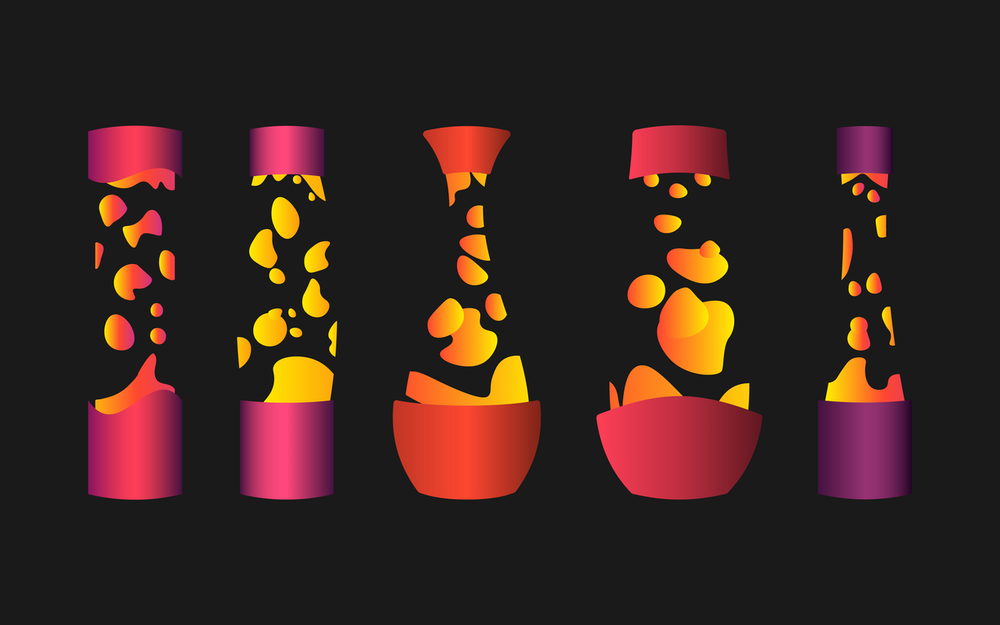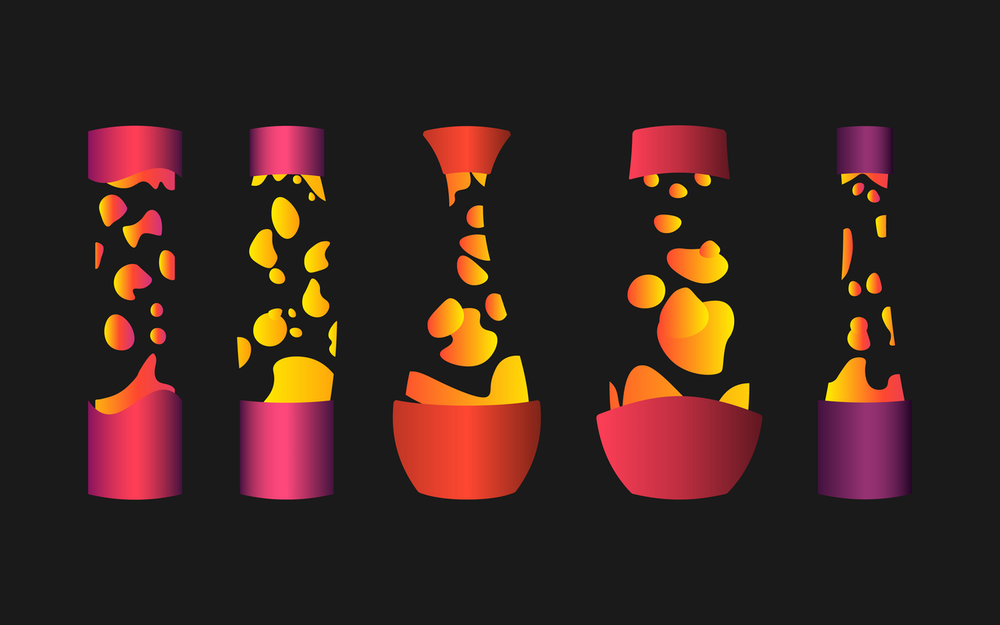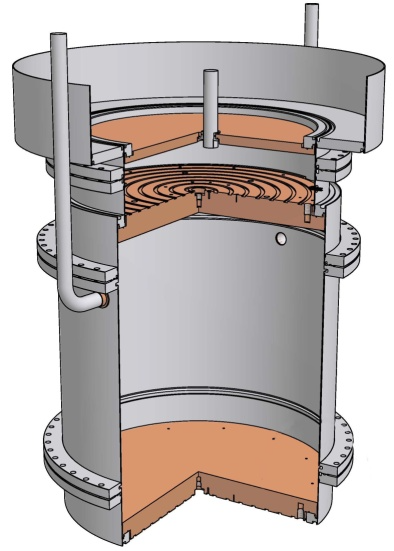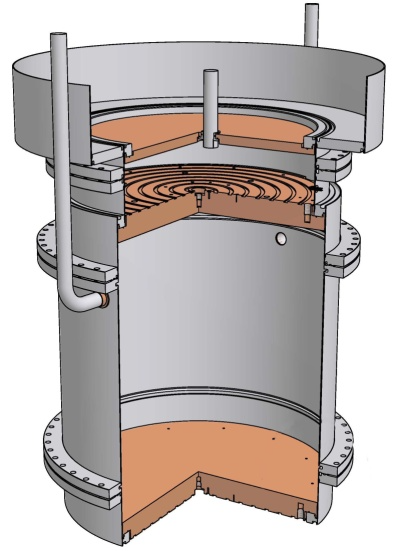Temperature Oscillation Increases Heat Flow
An oscillating temperature difference between two layers of fluid—such as the gases in Earth’s atmosphere—has a strong effect on their thermal properties, according to new experiments [1]. The temperature measurements of cold helium gas show that heat flows more efficiently when the temperature is oscillating than when it’s static. The effect was predicted theoretically but was difficult to observe in experiments. A better understanding of these properties could help researchers develop more sophisticated planetary weather models and design more efficient heat exchangers—devices involved in the heating and cooling of many kinds of equipment.
Weather patterns on Earth can be modeled by a simple setup: a fluid sandwiched between two flat plates, with the bottom plate hotter than the top. The bottom plate represents the warm surface of Earth; the top plate represents the frigid void of outer space. The warming fluid near the bottom plate rises, and the cooling fluid near the top plate sinks. Vortices form and arrange themselves to allow the fluid to flow in an alternating pattern of upward and downward drafts, like lanes of oppositely moving highway traffic.
First analyzed by Lord Rayleigh in 1916, this so-called Rayleigh-Bénard convection has been a classic model of convection because of its relative simplicity and applicability to many kinds of natural phenomena. But it misses important details. On Earth, for example, the temperature of the ground oscillates, warming during the day and cooling at night. So Earth’s atmospheric convection would be better modeled by “temporally modulated Rayleigh-Bénard convection,” where the bottom plate’s temperature oscillates.
Another important element of such models is the vertical heat flow. Understanding how the upward flow of heat—or “heat transfer”—is affected by the temporal variations is critical to accurately modeling the changing climate. For example, Rayleigh-Bénard convection in the ocean is partly responsible for the melting of ice sheets, and the heat-transfer efficiency of these convective currents determines the melting rate.
In 2020, a team of theorists led by Detlef Lohse of the University of Twente in the Netherlands added an oscillating temperature difference to their numerical simulations of convection [2]. They found that the oscillation increased the efficiency of heat transfer between the two plates. The explanation was that the oscillation destabilizes the so-called boundary layer of fluid very close to the plates, allowing blobs of fluid to pinch off from those two regions more easily. The hot blobs from the bottom plate can efficiently deliver heat upward. Lohse and his colleagues found that the modulation can increase the heat-transfer efficiency by up to 25% compared to a setup with static temperatures. Previous experiments had observed temporally modulated convection in the lab [3] but were not able to produce a large enough oscillation amplitude to see the improved heat-transfer efficiency predicted by Lohse and his colleagues.
Ladislav Skrbek of Charles University in the Czech Republic and Pavel Urban of the Czech Academy of Sciences and their colleagues set out to verify these numerical predictions using a fluid that allowed a wider range of modulation frequencies and amplitudes than previous experiments could achieve. They used helium gas at temperatures below 6 K sandwiched between two copper plates, with the temperature of one of the plates oscillating in time. At these low temperatures, copper’s thermal properties make it especially responsive to changes in temperature, which allowed the team to reach modulation amplitudes as high as 0.4 K and frequencies from 0.006 Hz to 0.2 Hz. The team found that the modulation enhanced heat transfer efficiency by up to 20% over a wide range of frequencies.
The researchers placed 12 temperature sensors throughout the cryogenic chamber, which allowed them to observe new details of the flow patterns. The data showed that thermal waves propagated through the fluid with almost no attenuation, confirming an earlier prediction.
Fluid physicist Katepalli Sreenivasan of New York University says that the new results provide important information that was not available from the previous experiments (performed by him and a colleague) [3]. In addition to improving modeling of ocean currents and weather systems on Earth and other planets, the researchers think that this work will prompt new designs for heat-exchangers. According to Joerg Schumacher of Ilmenau University of Technology in Germany, “If you can carry away 20% more heat from a system, that's already something.”
–Katie McCormick
Katie McCormick is a freelance science writer based in Sacramento, California.
References
- P. Urban et al., “Thermal waves and heat transfer efficiency enhancement in harmonically modulated turbulent thermal convection,” Physical Review Letters 128, 134502 (2022).
- R. Yang et al., “Periodically Modulated Thermal Convection,” Physical Review Letters 125, 154502 (2020).
- J. J. Niemela and K. R. Sreenivasan, “Formation of the “Superconducting” Core in Turbulent Thermal Convection,” Physical Review Letters 100, 184502 (2008).







